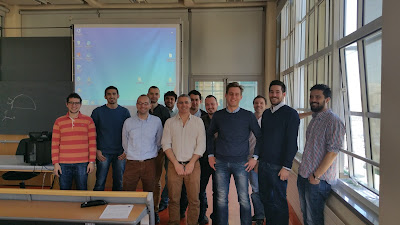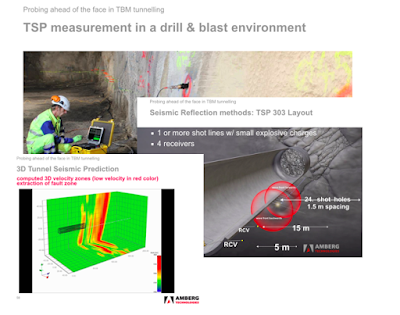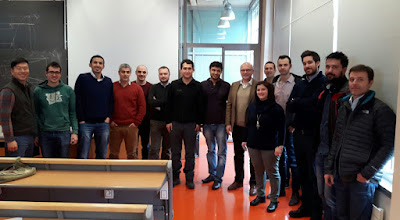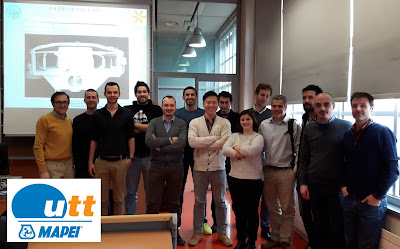We reached the end of the first modulus of T&TBMs MAS course with combination of some theoretical principles as lining structural design or risk management with several very interesting case studies.
To start with, Mirko Corigliano from ENEL Italy, covered the main aspects of Seismic design for underground structures. In most of the cases underground structures behaves properly against seismic actions due to its link to the ground and the damping effect of seismic waves with depth. It is important to consider anyway, when applicable, the seismic actions for the structural design of the lining elements in order to avoid undesired consequences such as loss of human lives or functionality.
Engineers Adriano Fava and Francesco Comba from Alpina S.p.A introduced a fantastic case study of a traffic tunnel undergoing the King's castle in Rabat, Morocco. An extremely delicate situation to minimise settlements in order to avoid any damage to this historical buildings lying on weak rocks. It is a great example of precise design and application of ground improvement and monitoring techniques.
 |
| Adriano Fava, Francesco Comba and the students after their case history lecture. |
Eng. Andrea Pettinaroli held a case history lecture on Artificial Ground Freezing in Warsaw Metro. When underpassing an existing traffic tunnel a face collapse occurred even with a jet grouted arch of pipes due to the presence of a monogranular sand layer under the watertable in proximity of Vistula River. The solution applied to overcome this critical section was the use of Freezing technique, combining open and closed circuit technology they maintained the ground at around -30 °C, reaching this way the completion of a very critical section of the project.
 |
| Eng. Andrea Pettinaroli and the students of the Master after his case study lecture. |
Harald Wagner (ITA AITES – EXCO Member, Consulting Engineer, Bangkok & Vienna) gave us a very interesting lecture regarding on the impact of Urbanising and the wide range of tunnelling applicability to cope with the raising demand in terms of infrastructure. He presented several case studies from his vast professional experience.
Fabrizio Barpi from Politecnico di Torino held a fantastic two day course on structural design of composite linings, particularly focusing on the combination of shotcrete with steel ribs. He introduced the main background concepts of the structural theories to then explain thoroughly the procedure proposed by Carranza-Torres (2000). The idea is to use the equivalent section approach to distribute the forces and bending moments on each component of the section to then calculate their capacity diagrams in order to verify the safety conditions.
 |
| Fabrizio Barpi and the Master's students after his lecture on lining design. |
We had the pleasure of receiving a lecture from Søren Degn Eskesen (ITA President and COWI Tunnel Chief Specialist) oriented to risk management methods. He emphasised on the importance of a thorough definition of every possible hazard to be encountered in a tunnelling project in order to have predefined countermeasures to tackle them as soon as possible and reduce their associated risk.
To finish with the first modulus we had a theoretical exam for the concepts presented until now. To pass the exam of each modulus is a must to obtain the final certificate of the Tunnelling and TBMs MAS Course.








